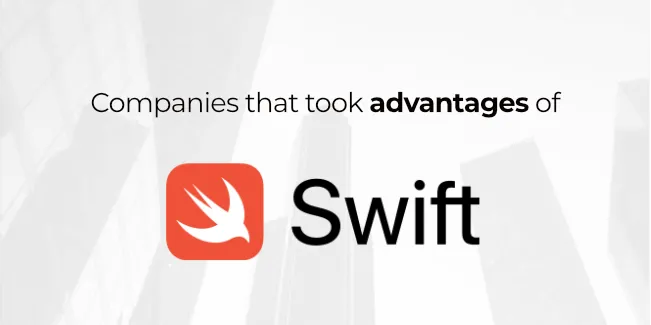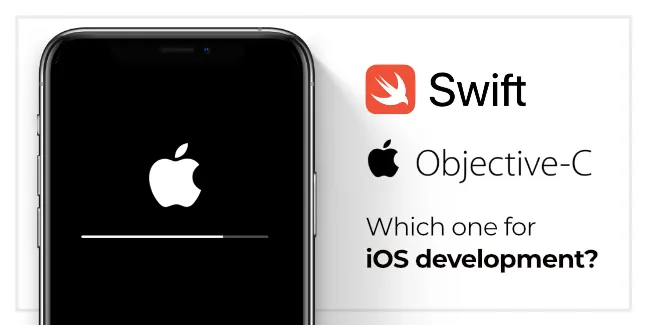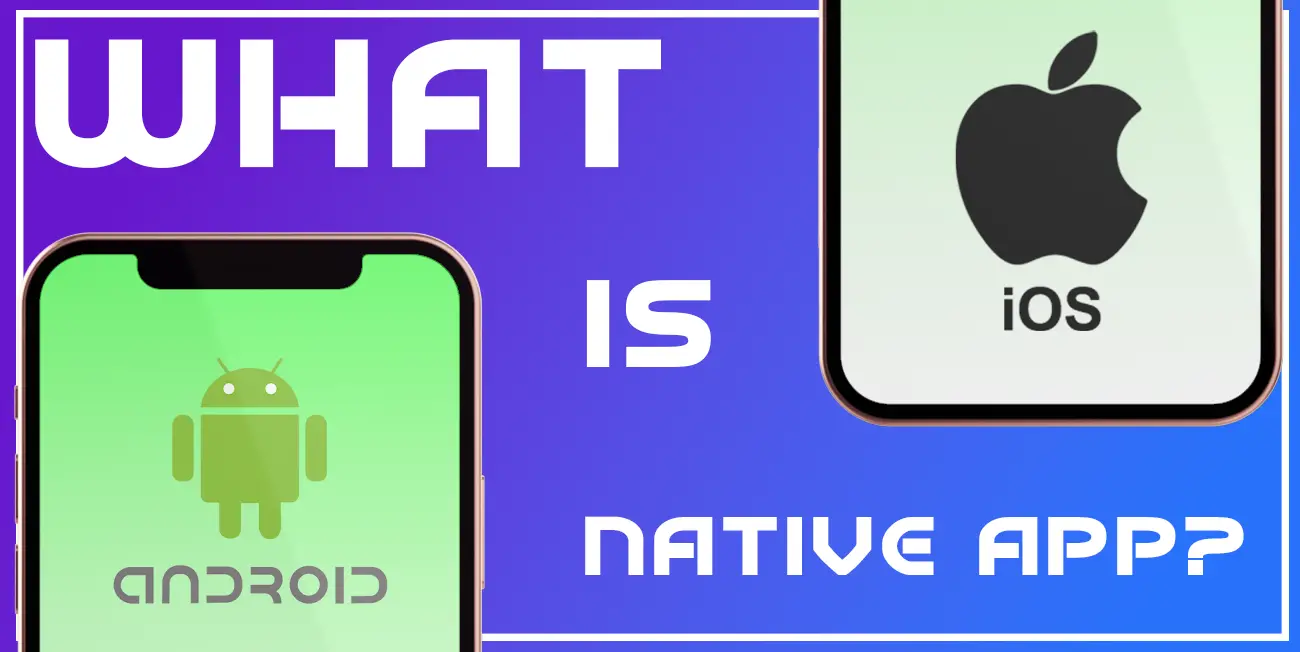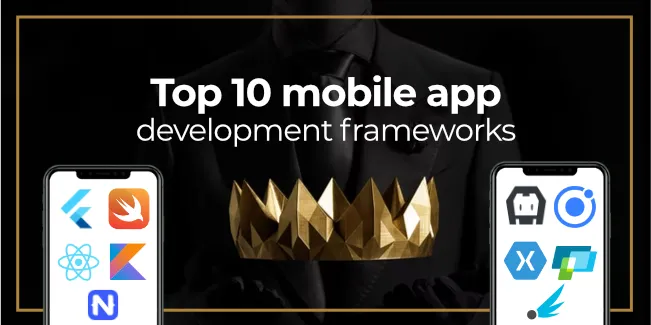Apple has always been a trendsetter in the technology industry, and its decision to move from Objective-C to Swift as the main language for developing iOS apps was no exception. In this article, we will take a look at the history of these two languages, compare their advantages and disadvantages, and see how they stack up against each other in different aspects. So far, Swift seems to have many benefits over Objective-C – but is it really the better choice for iOS app development?
Objective-C

The Objective-C object-oriented programming language was created in the early 1980s before Apple released its first iPhone. It was developed as a way to add Smalltalk-style messaging to the C programming language. In Objective-C, every element of object-oriented code can be given its own set of methods (or messages) that it can respond to. This made it very flexible and powerful but also quite complex – which is why it took many years for Objective-C to gain widespread adoption. Even now, there are still some holdouts who prefer the old ways.
Objective-C is best described by the company that developed it – Apple in their documentation –
“Objective-C is the primary programming language you use when writing software for OS X and iOS. It’s a superset of the C programming language and provides object-oriented capabilities and a dynamic runtime. Objective-C language `inherits C’s syntax, primitive types, and flow control statements and adds syntax for defining classes and methods. It also adds language-level support for object graph management and objects literals while providing dynamic typing and binding, deferring many responsibilities until runtime.”
However, this entry was last edited in 2014, and in fact, now, 8 years later, the first sentence is no longer true because the role of primary programming language is slowly being taken over by Swift.
Companies that took advantage of Objective-C

Objective-C has been on the market for over 40 years, and during this time, it has become the basis of many great projects. Even 5 years ago, you could say that most of the apps that were on the App Store were made using Objective-C, but with Swift’s strong growth, this trend is slowly declining. Nevertheless, many great applications have still been made with Objective-C. At this point, we will present several companies that based their solutions on this dinosaur of programming.
Uber
The first big company to decide on Objective-C is Uber. This application allows you to find a taxi and driver based on location easily. In addition, thanks to it, we can make payments quickly and without problems. At the moment, the application of this taxi giant is a mix of Swift and Objective-C programming languages but was originally developed using Objective-C.
Apple
One of the most popular applications that use Objective-C is Siri. This digital assistant uses this language to recognize our voice and perform various tasks such as setting alarms, sending messages, or making calls. Siri has been developed from the beginning in Objective-C; currently, there are no plans to change this.
Slack
This is one of the most used business applications in the world. It has a user-friendly interface and allows us to communicate quickly with our co-workers. Slack was originally written in Objective-C but later migrated to Swift. The company decided to move to this language because it is more modern, faster, and easier to use than its predecessor.
Advantages and disadvantages of Objective-C
Objective-C jest bardzo dobrze znanym programming language, dlatego tez dokładnie wiemy jakie ma mocne I słabe strony.
Advantages of Objective-C

It has a long history
As we said earlier, Objective-C has been on the market since the early 80s, so it is a very mature solution. With its use, thousands or even millions of lines of code were created, which means that this programming language has no secrets from iOS developers. Additionally, many libraries and documentation are available that can support the development process at every stage.
It is well known
Many developers are familiar with Objective-C, so finding someone to work on your project should not be difficult. In addition, the Objective-C community is very extensive, so if any questions arise during the project, the community will definitely have answers!
Dynamically typed language
Objective-C is a dynamically typed language, meaning you don’t have to declare the type of variables when writing the code. The compiler can automatically detect the type of the variable at compile time. This feature makes Objective-C more flexible and easier to use.
Disadvantages of Objective-C

Slightly slower than Swift
Objective-C is slightly slower than Swift because it uses a dynamic runtime. This means that the code is interpreted at runtime, which can lead to some performance issues.
Not as safe as Swift
Objective-C is not as safe as Swift because it doesn’t have some of the safety features that Swift has. For example, Objective-C doesn’t have type safety or memory safety. This means that it’s easy to make mistakes when writing code in Objective-C. Since Objective-C uses pointers extensively, there is a greater risk of errors related to memory management. Null pointer crashes are a common problem when using this programming language.
More difficult to learn than Swift
Objective-C programming language is a little more difficult to learn than Swift. This is because Objective-C is a superset of C, which is a very old language. As a result, Objective-C has a lot of legacy code that can be confusing for new developers.
Swift

Swift is a brand-new Apple language. Swift is a general-purpose, multi-paradigm compiled code developed by Apple in 2014 for apple platforms and Linux programs. In 2015, Apple made the source code public to encourage more people to use it. Since then, the App Store’s applications have risen dramatically.
Swift is comparable to Objective-C in many ways, but it’s also different in some important ways. For example, Swift is a type-safe language, which means that it’s not possible to make certain types of errors when writing code. This makes Swift more reliable and easier to use than Objective-C. Swift is designed to be easy to read and understand, even if you’re new to programming. It’s also less prone to errors because it doesn’t have as many rules as Objective-C.
Complex software systems need to be well-designed and easy to maintain. Swift is designed with these goals in mind. It’s easy to add new features to Swift code and to make existing code easier to read and understand.
Swift is also more efficient than Objective-C regarding memory usage and performance. In most cases, Swift applications run faster than Objective-C applications and use less memory. This is because Swift is a compiled language, while Objective-C is not. Compiled languages are generally faster and more efficient than interpreted languages like Objective-C.
Companies that took advantage of Swift

Swift is a successor to Objective-C and improves upon many elements and aspects where Objective was infirm. So it’s no surprise that most companies decided to either completely change the language in which their apps were written or combine Objective-C with Swift. Below you will find some very well-known companies that base their applications partly or entirely on the Swift programming language.
Twitter decided to use Swift when building its iOS application because the technology allows much freedom in improving and maintaining the application. In addition, applications created in Swift are highly scalable, which is well confirmed by Twitter because it is used by over 2 billion users, and it’s nice to remember the last situation when some downtime took place.
WhatsApp is one of the most famous messengers in the world. It belongs to Meta, which also manages Facebook. We mention this because the Facebook app for iOS was also made using Swift. This just shows how much potential Swift has to offer.
Airbnb
Airbnb, which has become the term for renting houses or flats from private people, is also written in Swift. Airbnb has utilized the Swift language to make its own capabilities. Their iOS app is based on Swift and works well regardless of heavy traffic conditions.
Advantages and disadvantages of Swift
Advantages of Swift

Type safety
Swift is a type-safe language, meaning you must declare the type of variables when writing the code. This feature makes Swift more reliable and less prone to errors.
Clear syntax
The syntax of Swift is much simpler and easier to read than the syntax of Objective-C. This makes Swift code more readable and understandable.
Performance
Swift is faster than Objective-C because it uses a just-in-time compiler, which compiles the code at runtime. This makes Swift apps run faster and smoother than Objective-C. To optimize memory management, Objective-C uses ARC (Automatic Reference Counting). Moreover, Swift supports Dynamic libraries that also boost the performance of the final app.
Disadvantages of Swift

Young language
Not as many developers know Swift compared to Objective-C. This means that a smaller pool of experienced Swift developers can choose from when building a team for your project. In fact, research shows that only 5% of developers all around the world learn Swift.
Not a cross-platform solution
With Swift, you can develop applications for all Apple platforms, Windows, and Linux. However, if you want to create a cross-platform app, Swift is not the best choice, as it was developed with iOS in mind. React Native and ReactJS are better options when it comes to cross-platform development.
No support for old iOS versions
Swift applications will work only on iOS7, and higher, because Swift doesn’t support older versions of this operating system. However, Apple pushes iOS users always to have the newest operating system version, so this should not be a big problem.
Swift vs. Objective-C

We’ve already got to know these two programming languages developed by Apple, so now it’s time to compare them and see how they differ in certain aspects.
User Interface
Both Objective-C and Swift are native iOS programming languages, so the interfaces created with their help will always meet Apple requirements and please users’ eyes. However, with Swift, it is much easier and faster to build a User Interface thanks to SwiftUI, a design tool that is included in Xcode. By building your interface, you will also be able to see changes in real-time, both in the code and in the preview mode. Therefore, when it comes to building UI, Swift wins.
Performance
We already mentioned this aspect as an advantage of Swift and a disadvantage of Objective-C, so it had to be included in this comparison. Apple itself says Swift is 2.6 times faster than Objective-C. Type safety, clear syntax, dynamic libraries, ARC, basically all the elements we mentioned in the advantages of Swift translate into great final application performance. This makes sense as Swift is a junior language that is perfectly suited to new challenges and operating systems. Swift is called Swift for a reason. Swift also wins in the performance aspect.
Code conciseness
When it comes to code conciseness, Swift is the clear winner. While Objective-C syntax has been improved by adding new features over the years, it’s still more verbose than Swift. This can be both good and bad – on the one hand, you have more control over your code and can express your thoughts more clearly. On the other hand, too much code can make your project difficult to maintain. In general, though, conciseness is considered a good thing, which is why Swift comes out ahead in this category.
Stability
Objective-C has been around for a long time and is considered a very stable language, it’s also had more time to accumulate legacy code. This can make working with an existing Objective-C project more difficult, as you have to wade through all the old code to find what you need. In contrast, Swift is a newer language that was designed from the ground up to be easy to work with and maintain. As a result, it’s much easier to keep your Swift codebase clean and tidy. However, Swift is constantly worked on and updated, so they may be some bugs while working on your project. The Objective-C is over 20 years longer on the market than the Swift, which means all the bugs it has had long since been fixed. In the case of Stability, we would lean towards Objective-C because of its age.
Conclusion
As we can see, both Objective-C and the new language – Swift, have their advantages and disadvantages. While Objective-C is a more traditional language that has been around for longer, Swift is a newer language that is constantly being updated by Apple. So, which language should you choose for your next project? Ultimately, the decision comes down to personal preference and what you feel most comfortable working with.



